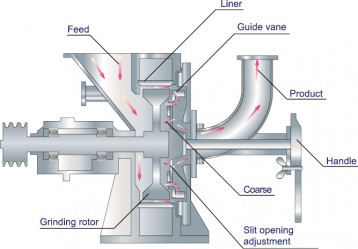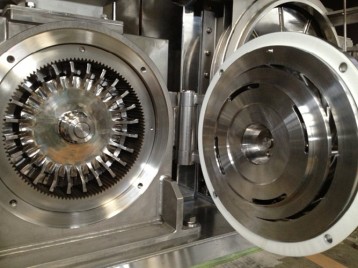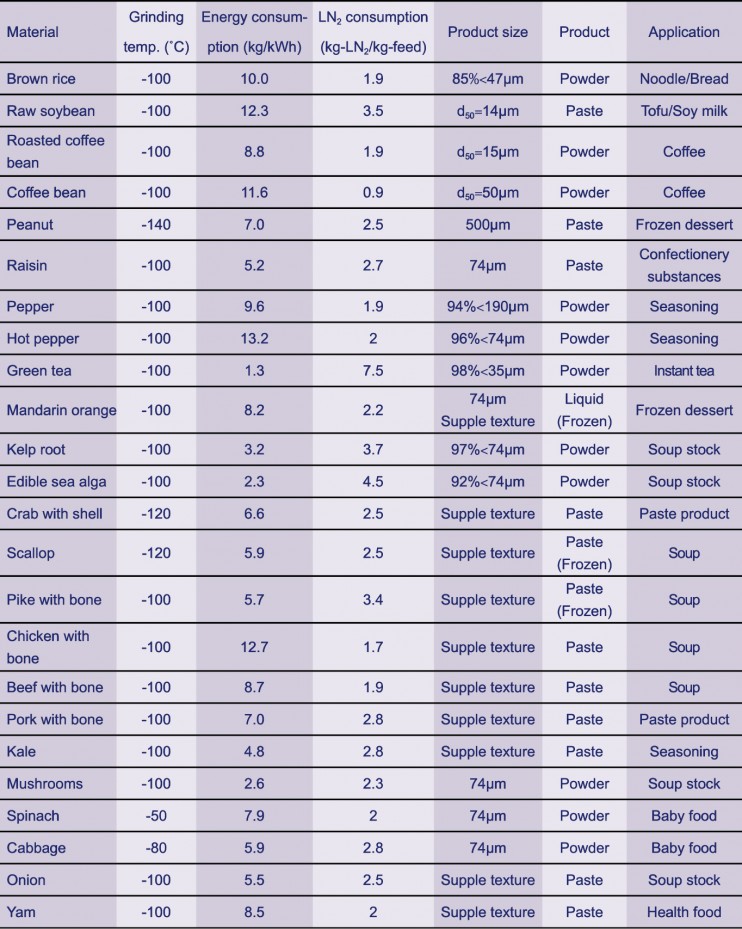- Industries & Machines Industries & Machines
- IIoT IIoT
- Service-Toll Processing Service-Toll Processing
- Material Material
- News News
- IR Information IR Information
-
Sustainability
Sustainability
Sustainability
- Introduction
- Sustaibality Policy - Mission Statement
- Editorial Policy
- Materiality & Strategy
- Technological contribution to a sustainable global environment
- Contributions towards a safer, more secure and prosperous society
- Sophistication of governance that supports business
- ESG Data Collection
- Sustainable Business Management ~ Finance
- Infromation Disclosure Based on TCFD Recommendations
- Jobs and Careers Jobs and Careers
-
About Us
About Us
About Us
- Corporate Vision
- Greetings (Company Introduction)
- Corporate Overview
- Corporate Profile
- Business Areas and Strengths
- Corporate History
- Hosokawa Micron Group
- Domestic Facilities
- Overseas Subsidiaries (Asia)
- Overseas Subsidiaries (Europe)
- Overseas Subsidiaries (America)
- Asian Agents
- Powder Technology Research Institute
- Industrial Property Rights
- Journals and Books
- Technical Information
- Annual Publication "Micromeritics"
- Compliance Charter
- Privacy Policy
- Cookie Policy
- Quality Principle

Industries & Machines
- TOP
- Industries & Machines
- Machines Search
- LINREX MILL LX
LINREX MILL LX

Summary
Materials such as rubber have elastic characteristics and are difficult to grind under normal conditions. However, by chilling them to below the brittle point, the material becomes fragile and can be ground by impact.
By utilizing the low temperature grinding method, the Linrex Mill takes advantage of this characteristic and can grind such materials effectively while preventing degeneration of the material from the heat generated during grinding. A standard low temperature grinding unit consists of a raw material chilling section, feed section, grinding section, product collecting section, cool temperature (sensible heat) collecting section, coolant feeding section, and control section. Out of these sections, selecting an appropriate grinding method is the most important. The Linrex Mill has an internal classifier and utilizes an impact grinding method to efficiently grind the materials. The Linrex Mill has an innovative energy-saving design where the freezer and cyclone are stored in a compact cold insulation box to minimize cool temperature loss.
("LINREX MILL" is a registered trademark of HOSOKAWA MICRON CORPORATION in Japan)
Principle
The feed material is first fed into the freezer to be chilled by Liquid Nitrogen (LN2). Once frozen, the material is then fed to the grinding chamber by a screw feeder. The grinding chamber itself is maintained at a low temperature by liquid nitrogen as well, allowing the materials to be ground and classified in a chilled environment. The ground materials become suctioned by the blower (installed within the grinder for the LX model) into the cyclone, where the products are collected and discharged by the rotary valve (LX model: Receiver tank only). Once the vaporized nitrogen gas flows through the cyclone and blower, they become reused within the grinder and freezer for sensible heat collection. Excess vapors are discharged out of the unit.

Fig.1 Flow

Fig.2 Structure

Fig.3 Linrex Mill LX-1
Ideal grinding temperature, Glass transition point
The most important aspect in grinding at extreme low temperatures is minimizing the consumption of liquid nitrogen (LN2) and lowering the running cost by finding the ideal grinding temperature that allows efficient grinding. Plastic materials have a glass transition point where the material becomes vitrified under a certain temperature. While grinding a vitrified material is much easier, our past data concludes that the glass transition point is not necessarily the ideal grinding temperature.
Generally, the glass transition point range is extremely wide. The only way to find the ideal grinding temperature is through numerous testing and collecting large amounts of data. This means that if the temperature changes, it is equivalent as grinding a completely different raw material. Even if materials have the same title, it is thought that each specific molecular structure has effects on the ideal temperature. For example, polyethylene has an ideal grinding temperature of roughly -120°C, whereas polypropylene has an ideal grinding temperature of -100°C. The Linrex Mill can be chilled to a maximum temperature of approximately -180°C.
Liquid nitrogen (LN2) consumption amount
Most of the liquid nitrogen (LN2) consumption takes place at the grinder and blower to minimize heat generation. Therefore, excluding the raw material chilling procedure, once the cooling temperature is set the LN2 consumption rate per unit of time becomes roughly constant. In other words, the LN2 consumption per unit of material is inversely proportional to the amount of change in capacity (capacity per unit of time). Hence, in order to minimize LN2 consumption, it is essential to prevent over grinding of the products.
Features
- Materials that are difficult to grind at normal temperatures can be easily ground.
- Can produce particles with high flowability and acute angle shapes.
- Degeneration due to heat and oxidization, as well as flavor and aroma loss of foodstuff and spices are prevented.
- Can prevent odor, dust explosion, combustion, and noise that are accompanied with grinding.
- Has an excellent cold insulation effect, with minimal loss of liquid nitrogen (LN2). (insulation box type)
- Low power consumption for grinding.
- Easy maintenance, inspection, and cleaning.

Fig.4 Grinding references
Applications
Low melting-point materials
Suitable for grinding materials that soften/melt when ground at normal temperatures such as wax, plastics, etc.
Materials that degenerate under heat
Is able to grind foodstuffs and spices (especially tea, pepper, cayenne pepper, etc.) without loss of flavor and aroma.
Wet/oily/fibrous material
Widely visible for foodstuff material, by grinding at low temperatures, fine particles with good textures can be produced without the loss of volatile components, flavor, and nutrition from heat.
Dust explosion, Combustible materials
The grinding sequence takes place in an inert gas (nitrogen) environment (oxygen free), limiting chemical reactions and oxidization, while preventing dust explosion and ignition.
Others
Has countermeasures for abrasion and noise levels with many references.
Table 1 Applications


Feel free to contact us. if you have any questions or concerns.

